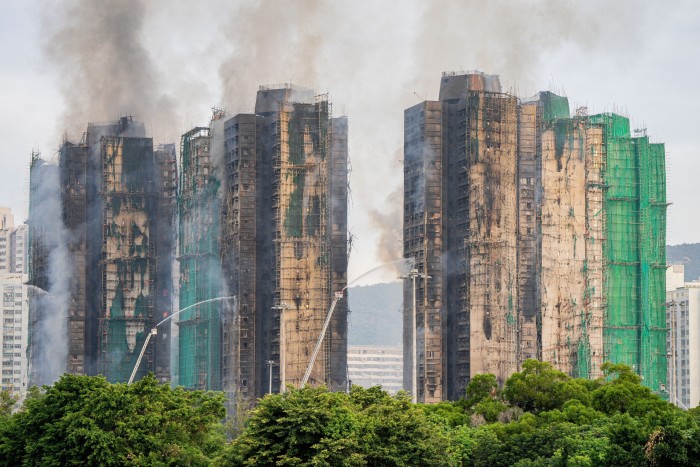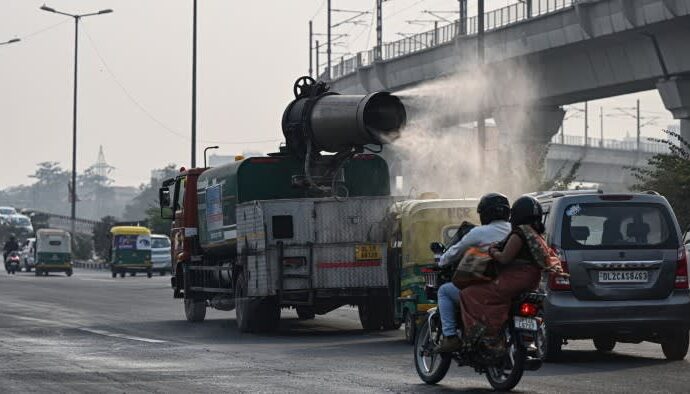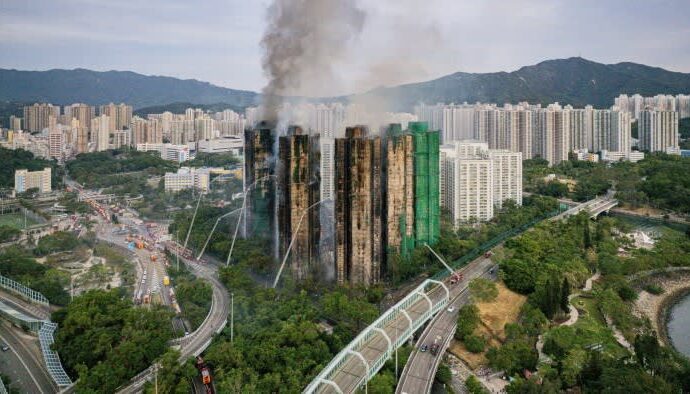Unlock the Editor’s Digest for free
Roula Khalaf, Editor of the FT, selects her favourite stories in this weekly newsletter.
Dangling from the blackened remains of Wang Fuk Court in Hong Kong this week, a broken patchwork of singed bamboo was testament to a centuries-old craft that may soon disappear.
Hong Kong is one of very few major cities in the world that still employs bamboo scaffolding on large-scale construction and renovation works, and its yellow latticeworks are one of the Chinese territory’s defining characteristics.
Proponents argue that as well as being sturdy, the material is cheap, adaptable and sustainable. Without it, they say, Hong Kong’s dense mesh of towering skyscrapers and narrow streets might not have been built so rapidly.
But with at least 128 people dead in the most devastating residential blaze in the city’s modern history, policymakers are pushing for the use of metal instead of bamboo and scrutinising the building standards that helped transform the former British colony from a series of fishing villages into one of the world’s most densely populated metropolises.
“The government will conduct timely inspections of buildings undergoing major external renovations that have erected scaffolding and netting. The Development Bureau has already been in touch with industry leaders to discuss the promotion of a roadmap to replace bamboo scaffolding with metal,” John Lee, the city’s chief executive, said on Thursday after visiting the site of the fire.
Concerns about bamboo are not new.
In March, the government said it would require at least 50 per cent of new public works to use metal scaffolding, citing worker safety, but rollout has been slow. There were 23 deaths related to bamboo scaffolding between January 2018 and early this year, according to government figures.
While the government said in July that it had no intentions of banning the material outright, a blaze at a bamboo-clad building in the city’s Central district in October heightened concerns over its flammability.
“Put it this way, yes: metal is much more difficult to burn,” said Tony Za, executive director at Hip Hing Construction, and an honorary chair of Hong Kong Institute of Construction Managers. He added that bamboo had some naturally fire-resistant properties and was cheaper to use and enabled faster construction than metal frames.
“But now we are talking about fatal accidents to human life . . . I think that this is much more important than the cost and time advantage,” he said.

Other factors could also have contributed to the spread of the fire.
Authorities have said that sticking styrofoam boards to windows during the Wang Fuk Court renovations had worsened the blaze. They believe the materials were not up to safety standards and have arrested three men connected to the renovations on suspicion of manslaughter. The contractor could not be reached for comment.
Fire officials also confirmed on Friday that alarms within the complex had malfunctioned and said they would take legal action against the contractor responsible. Earlier, local media reported that residents did not hear alarms.
Chris Tang, the city’s security chief, said a follow-up investigation into the fire would take three to four weeks.
Pan Tang, a resident of Wang Fuk Court in his 40s who works as a foreman, was doubtful as to whether bamboo — which he described as cheap, fast and part of the city’s cultural heritage — was the culprit.
“It should be that they used lots of non-compliant materials,” he said, as he waited with his wife outside a shelter by the Wang Fuk site. “Someone should take responsibility.”
After news of the blaze, one Hong Kong-based architect, who asked to remain anonymous, said that their team immediately tested all the mesh and bamboo used in their current construction project in Kai Tak. The materials were all intact after being set on fire for a sustained amount of time.
“Hong Kong has a unique history and culture in using the bamboo scaffolding and we have never had any issue at our sites. It’s a durable, safe and sustainable material,” they said. “The only downside is probably the skilled workers required to be able to put them up. It’s more complicated than the alternative structures.”

The use of styrofoam on windows, as alleged by government investigators, was “insane [and] illegal” and meant there was “no chance to slow [the fire] down or get people a chance to get out,” said Raffaella Endrizzi, an architect who teaches at the Chinese University of Hong Kong.
The highly-adaptable nature of bamboo, which can be constructed into complex shapes in tight spaces, had helped to build Hong Kong’s uniquely dense skyline, said Endrizzi, who is carrying out research on the city’s bamboo frames.
“I’m not sure Hong Kong could have been built the way it’s built without bamboo,” she said. “The smallest tragedy in this story . . . is that it’s the bamboo that will be considered the cause.”


